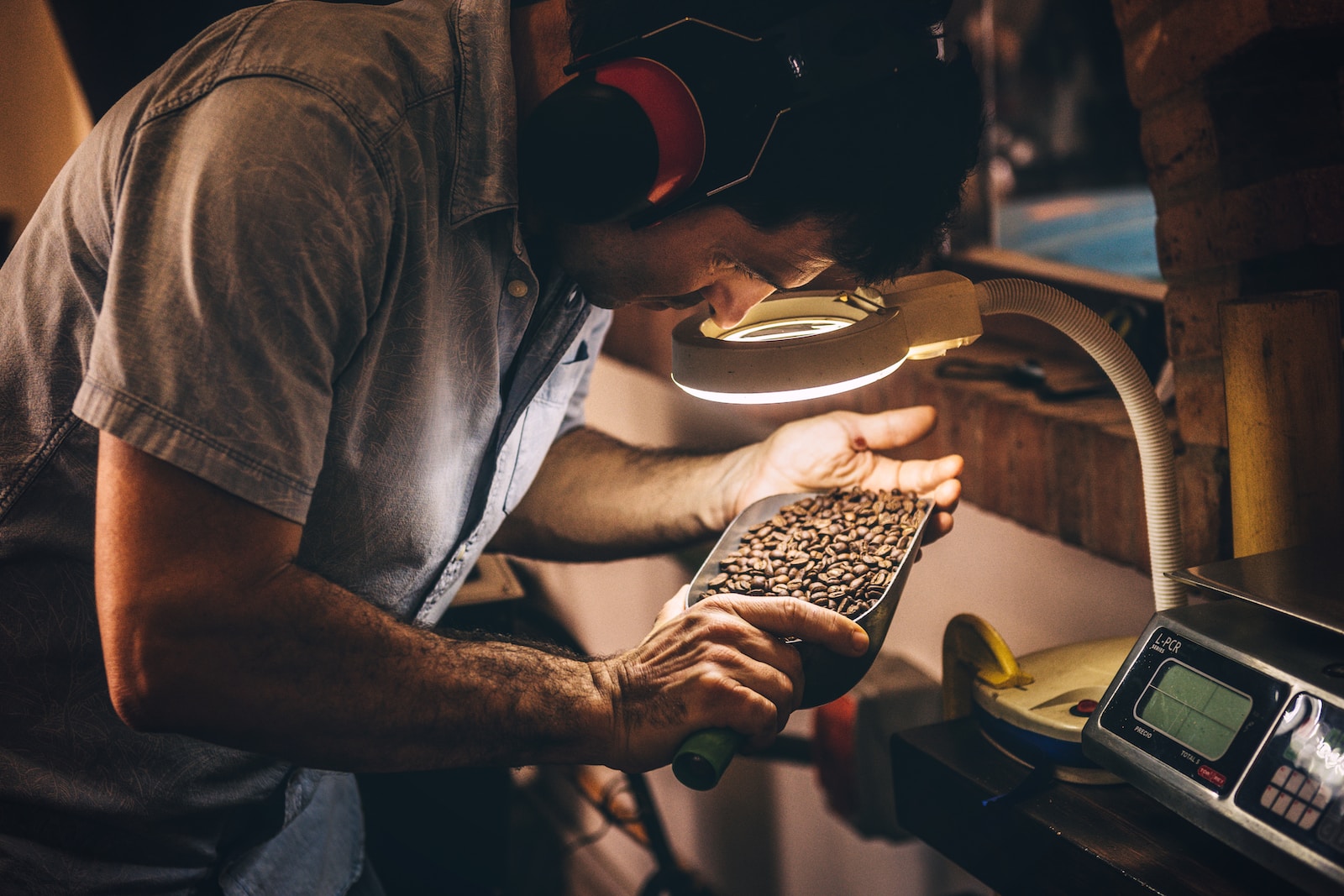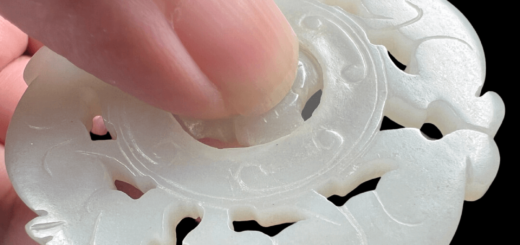What is the Best Technique the Beginner Needs to Know for Starting Ancient Jade Collection? Let’s Unveil the Secrets!

Introduction
Starting a collection of ancient jade can be a fascinating and rewarding journey. Jade has captivated humans for centuries, holding significant cultural, historical, and aesthetic value. If you’re a beginner eager to explore the world of ancient jade, understanding the techniques used by experts is essential. In this article, we will uncover the best technique for beginners: using the eye to see. We will also explore the reasons why experts always carry magnifiers and what they are looking for.
Understanding Ancient Jade
Before diving into the techniques, let’s gain a basic understanding of ancient jade. Jade is a gemstone that has been revered by various civilizations throughout history. It holds immense cultural significance in many Asian cultures, symbolizing virtues like wisdom, purity, and protection. Ancient jade artifacts can range from ornamental objects to ritualistic and ceremonial pieces.
Importance of the Eye
The eye plays a crucial role in ancient jade collection. It refers to the ability to visually assess and evaluate the quality, authenticity, and value of jade artifacts. Developing an eye for jade takes time and practice. It involves training your senses to recognize the subtle nuances that make each piece unique. By honing your observation skills, you can detect the intricate details and characteristics that indicate quality and craftsmanship.
Utilizing a Magnifier
To enhance their visual assessment, experts often use magnifiers while examining jade artifacts. These magnifiers provide a closer look at the piece, enabling them to scrutinize the finer details. Magnifiers help in identifying intricate carvings, evaluating the translucency and color distribution, and detecting any imperfections or alterations. This practice allows experts to make informed judgments about the authenticity and quality of the jade.
Key Aspects to Examine
When evaluating jade, there are several key aspects to consider:
- Color and Translucency: Genuine jade exhibits a range of colors, including various shades of green, white, lavender, and more. The intensity and distribution of color play a significant role in determining its value. Translucency, or the degree of light transmission through the stone, is also a vital factor to assess.
- Texture and Surface Characteristics: Examining the texture and surface of jade can reveal valuable insights. A high-quality piece will have a smooth and even texture, free from blemishes or cracks. Additionally, the presence of natural imperfections like “nephrite silk” or “jade skin” adds to the charm and authenticity of the artifact.
- Carving and Craftsmanship: Jade carvings require immense skill and precision. Evaluating the craftsmanship involves examining the intricate details, symmetry, and overall artistry of the piece. Expertly carved motifs and symbols can enhance the value and cultural significance of the jade artifact.
- Symbolism and Cultural References: Ancient jade often incorporates symbolic elements that reflect the culture and beliefs of the time. Understanding the symbolism associated with specific motifs or cultural references can provide valuable context and enrich your appreciation of the artifact.
Identifying Authenticity
With the increasing prevalence of counterfeit jade in the market, it is essential to develop techniques to identify genuine artifacts. Some common practices to differentiate real jade from fake include:
- Visual Examination: Assessing the color, translucency, texture, and craftsmanship of the jade piece using the eye and magnifier can help identify inconsistencies or signs of forgery.
- Sound Test: Gently tapping the jade against a hard surface produces a unique, resonant sound known as the “jade chime.” Genuine jade will emit a clear and melodious sound, while imitations may produce a dull thud.
- Density and Weight: Jade has a high density, so it should feel heavier compared to other stones of similar size. The weight can provide a clue about the authenticity of the artifact.
- Thermal Conductivity: Authentic jade has low thermal conductivity, meaning it remains cool to the touch even in warm environments. Counterfeit jade or imitations may quickly absorb and reflect heat.
Factors Affecting Value
Several factors contribute to the value of ancient jade:
- Rarity and Availability: Jade varieties like “imperial jade” or “mutton fat jade” are highly sought after due to their rarity. Limited supply and high demand drive up their value.
- Historical and Cultural Significance: Jade artifacts with historical provenance or cultural significance are often more valuable. Pieces associated with renowned dynasties or esteemed artists fetch higher prices.
- Condition and Quality: The overall condition of the jade, including any damage or restoration, can impact its value. High-quality jade with exceptional color, translucency, and craftsmanship commands a premium.
Enhancing Your Collection
To enrich your ancient jade collection, consider the following steps:
- Research and Education: Expand your knowledge of ancient jade through books, articles, and museum visits. Learning about different periods, styles, and cultural contexts will deepen your understanding and appreciation.
- Connect with Experts: Join online forums, attend conferences, or join local collector groups to network with experienced collectors and experts. Engaging in discussions and seeking advice can help refine your eye for jade and gain valuable insights.
Preserving and Caring for Jade
To ensure the longevity of your jade collection, follow these preservation tips:
- Proper Storage and Display: Store your jade artifacts in a dry and controlled environment, away from direct sunlight and extreme temperature fluctuations. Use soft padding or cloth-lined containers to prevent scratches or damage. When displaying your collection, avoid placing jade in areas with excessive light or humidity.
- Cleaning and Maintenance: Clean your jade pieces with a soft, non-abrasive cloth or a mild soap solution. Avoid using harsh chemicals or abrasive cleaners that can damage the surface. Regularly inspect your collection for any signs of deterioration or damage and consult a professional if necessary.
- Avoid Contact with Chemicals: Keep your jade away from chemicals, such as perfumes, cosmetics, and household cleaning agents, as they can potentially harm the surface or alter the color of the stone.
- Handle with Care: When handling jade artifacts, ensure that your hands are clean and free from oils or lotions. Use gentle movements and avoid dropping or applying excessive pressure to prevent accidental damage.
Conclusion
Starting an ancient jade collection requires a combination of knowledge, observation skills, and a passion for the beauty and historical significance of jade. By honing your eye for jade, utilizing magnifiers, and learning about the key aspects of evaluation, you can confidently navigate the world of ancient jade. Remember to focus on color, translucency, texture, carving, and cultural symbolism when assessing the authenticity and value of jade artifacts. With time, practice, and dedication, your collection will grow, and your appreciation for this remarkable gemstone will deepen.
FAQs
-
- How do I determine the age of an ancient jade piece? Age determination of ancient jade can be challenging. However, experts consider factors such as style, craftsmanship, historical documentation, and scientific dating techniques to estimate the age of a piece.
- Can I start an ancient jade collection with a limited budget? Yes, starting a jade collection is possible with a limited budget. Focus on acquiring smaller pieces or exploring alternative types of jade that are more affordable but still hold historical or cultural significance.
- Are there specific regions known for producing high-quality ancient jade? Yes, certain regions have historically been renowned for producing high-quality jade. For example, ancient Chinese jade from regions such as Hetian and Guangdong is highly regarded. Jade from Myanmar (Burma), Guatemala, and New Zealand also have their unique characteristics.
- How do I prevent buying counterfeit jade? To avoid purchasing counterfeit jade, educate yourself about the characteristics of genuine jade, seek reputable sellers, and consider obtaining expert opinions or certifications before making significant purchases.
- Can I sell my jade collection in the future? Yes, you can sell your jade collection in the future. The value of jade may appreciate over time, especially if you have rare or high-quality pieces. Consult with experts or engage with reputable auction houses or specialized dealers to explore selling options.



